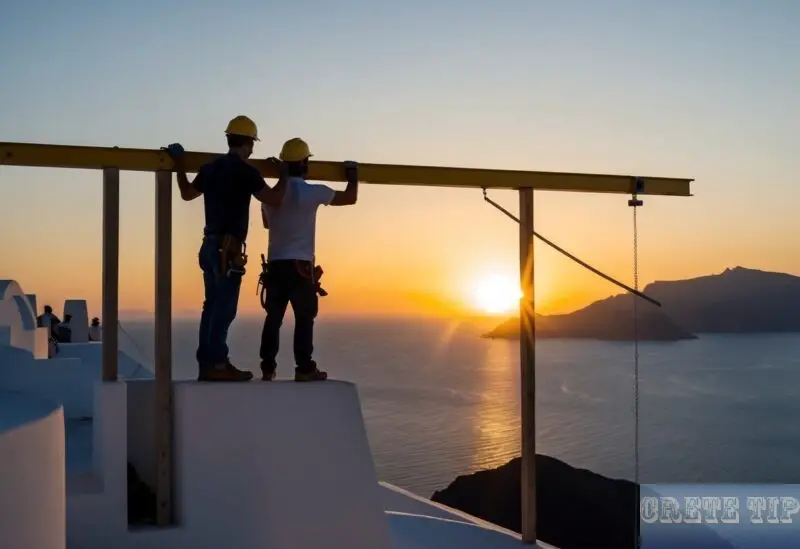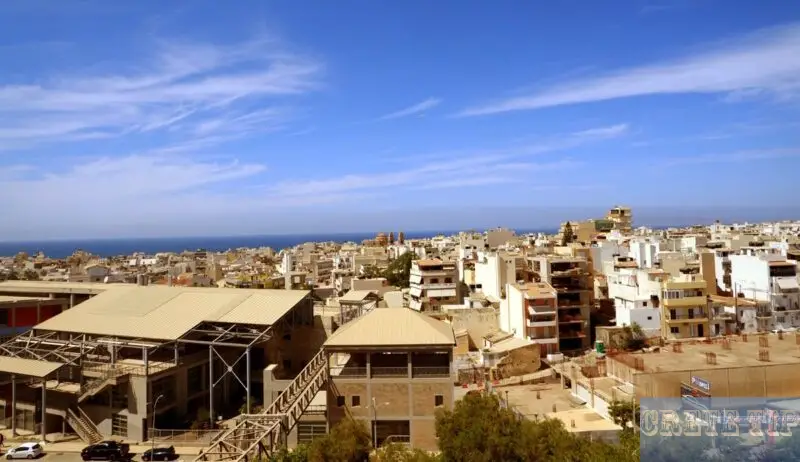Life and living on Crete: Everyday experiences and local tips.

When we think about life in Crete, Greece, we picture sun, sea, and a slower pace that lets us actually enjoy the moment. From the lively cities to the tiniest villages, there’s this blend of natural beauty and a genuinely friendly culture that makes living here feel different in the best way.
Life on Crete gives us a relaxed Mediterranean lifestyle with access to great food, stunning beaches, and a community that welcomes you in.
Crete suits anyone craving calm, but there’s also plenty for those who want adventure or the buzz of local festivals. With mild winters and warm, sun-soaked summers, the weather makes it easy to be outside all year.
Whether you’re a retiree, a remote worker, or part of a family, the low cost of living and solid amenities make Crete a pretty tempting place to settle down.
Once you settle in, you’ll notice that traditions, food, and hospitality really shape the daily experience. There’s a gentle rhythm here that nudges you to slow down, connect, and just see what Greece’s biggest island is all about.
Further information about life and living on Crete
Overview of Life on Crete
Crete is a mix of daily comforts, strong traditions, and welcoming communities. Life here is shaped by a Mediterranean pace, deep-rooted values, and a sense of togetherness among both locals and newcomers.
Daily Life and Lifestyle
Life in Crete moves at a relaxed rhythm. Most of us start our days with fresh bread from the bakery and coffee, then it’s off to work or errands.
Shops and offices usually close for a few hours midday, which gives us time to rest or sit down for lunch with family. The Mediterranean climate means we’re outside a lot—gathering in village squares, heading to the beach, or just strolling in the evening.
Meals are a highlight, loaded with vegetables, olive oil, cheese, and whatever seafood’s freshest. After a busy morning, afternoons are quiet, especially when the summer heat hits hard.
Evenings are when everyone comes out again. Restaurants and open-air cafes fill up with laughter and conversation, and there’s always time for another coffee or a late bite.
Community and Friendships
Community life is at the core here. Villages and towns are close-knit, and neighbours know each other well—people help out when you need it, no questions asked.
We celebrate local festivals, religious holidays, and family events together. Making friends is honestly pretty easy; folks are open to newcomers and quick to invite you for coffee or a get-together.
Friendships grow fast, built on trust, shared traditions, and just seeing each other day to day. There are plenty of associations and clubs—youth groups, sports teams, all sorts of ways to meet people and feel like you belong, whether you’ve been here forever or just arrived.
Hospitality and Welcoming Spirit
Hospitality—“philoxenia”—is a huge part of the Cretan identity. Visitors and new residents get treated with genuine warmth and respect.
It’s totally normal to be offered coffee, a glass of raki, or even a meal if you drop by someone’s house. They really do take pride in making guests feel at home.
Even in the busiest tourist spots, the friendliness of Cretans stands out. For many, helping others is just as important as looking after your own family.
Open doors and welcoming attitudes build strong relationships. Sharing food, stories, and traditions is what makes this island feel special—and it means just about anyone can feel like they belong here.
The Cretan Culture
Cretan culture revolves around hospitality, old traditions, lively festivals, and food you won’t forget. People here value family, storytelling, and just being together—whether at home or out in the village square.
Traditions and Customs
They are proud of their customs, and many go back hundreds of years. Hospitality is a big deal—guests are always welcomed, no matter what.
Storytelling? That’s part of daily life. Older generations share myths and tales, passing down local history. Traditional music and dance pop up at family gatherings, with the lyra and laouto playing the soundtrack.
Some villages still keep the old dress code—knee-high boots and black headscarves for men, especially during festivals. Inside most homes, you’ll spot icons and family photos, a nod to ancestors and history.
Weddings and baptisms are huge social events, and the whole community gets in on the celebration.
Festivals and Celebrations
Cretan festivals are an explosion of religion, music, food, and dancing. Every village has at least one, usually tied to a saint’s day or the harvest.
Carnival—Apokries—brings colourful parades and wild costumes before Lent. Easter is the big one, with candle-lit processions and fireworks.
In summer, every village throws a panigiri—tables outside, local food and wine, and music that goes until sunrise. Kids and adults join the folk dances, and honestly, visitors are always pulled into the circle.
Arts like pottery, weaving, and embroidery are often on display at these events. It’s a way to keep traditions alive and keep the community tight-knit.
Raki and Local Cuisine
Raki is our go-to spirit—distilled from grape skins, clear and strong. It’s offered as a welcome, a thank you, or just because someone stopped by.
You’ll see people sipping raki at the kafeneio, usually with a plate of olives, cheese, or fresh bread. The food leans on local ingredients: olive oil, herbs, tomatoes, and wild greens.
Dishes like dakos (barley rusk salad), lamb with stamnagathi, and Cretan cheeses are on the table more often than not. Meals are slow, sometimes outside under a tree, and always about sharing stories and laughs over simple, good food.
Major Towns and Cities

Crete’s urban centres are lively, with a mix of historic buildings and modern life. Our routines get shaped by these towns, each with its own vibe, shops, and neighbourhoods.
Living in Heraklion
Heraklion is the largest city on Crete and the island’s main hub. Busy streets, lively markets, and easy access to the airport and ferry port make it practical.
The city centre is packed with shops, coffee houses, and restaurants, all walkable. There’s this cool mix of old and new—you can wander through ancient city walls or visit the Venetian Fortress on the harbour.
The Archaeological Museum is a favourite, full of artefacts from Crete’s long history. Public transport is solid, with buses running to other parts of the island.
Residential areas range from flats in the centre to quieter suburbs. Schools are everywhere, and the University of Crete adds a student buzz.
Heraklion gets crowded in summer, but the wide avenues and squares offer space to breathe. Beaches aren’t far, so escaping the city is always an option.
Life in Chania
Chania sits on the north-west coast and is famous for its beautiful old town and Venetian harbour. The narrow alleyways are lined with shops, cafés, and art studios—honestly, it’s hard not to linger.
The vibe is friendly, and people spend a lot of time outdoors, even late at night. The local market is perfect for picking up fresh veggies, cheese, and olives.
Chania has a slower pace than Heraklion but still covers all the basics. Walks along the promenade at sunset are a favourite, with views of the lighthouse and fishing boats bobbing in the water.
Buses make getting around simple. Schools and healthcare are good, and there are parks and playgrounds for families. Beaches and mountains are never far, which is a real perk.
Chania draws artists, students, and anyone looking for a mix of culture, history, and modern comforts.
Exploring Rethymnon and Coastal Living

Crete’s north coast is dotted with lively towns and stretches of peaceful beaches. Rethymnon and Sitia both offer their own take on Greek island life, with plenty of history, culture, and that local charm you can’t fake.
Both towns give you a real sense of what it’s like to live by the sea in Crete.
Historic Rethymnon
Rethymnon sits between Chania and Heraklion on the north coast. The old town is famous for its well-preserved Venetian architecture, narrow streets, and bursts of colour everywhere.
Walking through the centre, you’ll find shops, small cafes, and locals just doing their thing. The Venetian harbour is a favourite spot for watching boats and grabbing fresh seafood.
The Fortezza, a big fortress on a hill, offers impressive views of the city and sea. Every summer, Rethymnon buzzes with festivals, art events, and street markets.
A daily walk along the sandy beach is a simple pleasure—the Mediterranean breeze never gets old. The mix of busy town life and seaside calm makes Rethymnon a sweet spot for people who want both culture and a bit of relaxation.
Main attractions in Rethymnon:
Place |
Why Visit |
|---|---|
Fortezza Castle |
Panoramic views, history |
Venetian Harbour |
Food, scenery, local life |
Old Town |
Shopping, architecture |
Sitia and the East
Sitia sits in the far east of Crete, and honestly, it’s way quieter than Rethymnon. The town wraps around a small port, where you’ll spot working fishing boats and family-run tavernas.
Sitia doesn’t get the heavy tourist crowds, so it’s easy to feel like you’re part of the local rhythm. Each day kind of blends into the next, in a good way.
This region is known for its long, sandy beaches—Vai Beach is a favorite, with its natural palm forests. We love wandering through unspoilt villages like Zakros, where ancient Minoan ruins peek out from the hills.
Olive groves blanket the countryside, and we often find ourselves sampling local olive oil and wine at small, family-run farms.
There’s always a music festival or a local fair happening somewhere. Sitia moves at its own pace, with deep traditions and peaceful coastal scenery.
It just feels like classic, everyday Crete, far from the noise and crowds.
Nature, Landscape and Climate

Crete’s got this wild mix of rugged mountains, beautiful beaches, and a climate you can’t quite pin down. One day you’re hiking a gorge, the next you’re by the turquoise sea, and the weather keeps you guessing through the seasons.
Weather Throughout the Year
Crete sits somewhere between temperate and subtropical climates. Summers? Hot and dry, with July and August easily hitting 30°C (86°F) or above.
Long, sunny days are the norm, and rain barely makes an appearance—ideal for beach days if that’s your thing.
Winters are a different story, but not too harsh. In January, temperatures usually hover around 10-16°C (50-61°F).
Rain comes more often from November to March, but snow only really shows up in the highest mountains.
Autumn and spring are probably the sweet spot—mild, fewer tourists, and you can stay outside most of the time. Rainfall averages about 640 mm (25 inches) a year, mostly in the cooler months.
Cretan Landscapes and Scenery
Crete’s scenery is dramatic, no question. The White Mountains (Lefka Ori) rise up in the centre and west, giving you those classic postcard views.
There are deep gorges too, like the famous Samaria Gorge, which stretches for 16 km and attracts plenty of hikers.
Along the coast, you’ll find sandy beaches and tucked-away pebbly bays. The south coast is all about steep cliffs dropping straight into the Libyan Sea.
Olive groves, vineyards, and fields break up the valleys and plains. Villages nestle into hillsides, surrounded by cypress and pine forests.
Spring brings wildflowers everywhere, and the sea stays that impossibly bright blue nearly all year. The whole mix of sea, mountains, and countryside makes Crete feel lively but also pretty peaceful.
Moving to Crete

Thinking about moving to Crete? There are a few things to figure out first. Settling in takes some planning, and getting there isn’t always straightforward.
Practicalities and First Steps
Before you pack your bags, it’s smart to organise your documents. If you’re coming from outside the EU, check visa and residence rules.
EU citizens just need a valid passport, but it’s still wise to register with the local authorities when you arrive.
Finding a place to live is a big step. Some start by renting, which gives you time to get a feel for different towns and villages.
Local estate agents and online listings are everywhere. The cost of living here is often lower than in much of Europe, but it depends where you settle.
Sorting out your finances is pretty important. Opening a local bank account helps with bills and shopping.
Learning a bit of Greek goes a long way—especially in rural spots where English isn’t a given. Healthcare is solid, with both public and private options available.
Flights and Travel Connections
Crete’s got two main airports: Heraklion and Chania. Both offer regular flights from lots of European cities, especially in tourist season.
Direct flights mostly run April to October, so if you’re coming in winter, you’ll probably connect through Athens.
If you’re bringing a car or lots of luggage, ferries run daily from Athens (Piraeus) to Crete. They arrive in Heraklion, Chania, and sometimes Sitia.
The trip takes 7–9 hours overnight, and it’s actually a comfortable way to bring your stuff—and you get to see the Greek islands along the way.
Once you’re on the island, getting around is easy enough. You can use buses, taxis, or hire a car to explore.
Roads are generally good, though mountain routes can get twisty. Having both flights and ferries means you’ve got options for coming and going.
Finding Property in Crete

Crete’s property scene is surprisingly varied—think traditional homes, new builds, and seaside villas. You can pick from lively towns, quiet villages, or coastal spots, depending on what you want.
Buying or Renting
There are really two main ways to go: buy or rent. Foreigners are allowed to own property, and plenty of expats have bought homes here.
The buying process means working with a lawyer and notary to sort out paperwork and contracts.
Typical buying steps:
- Find a property through estate agents or local listings
- Sign a pre-contract with a deposit
- Legal checks to ensure property ownership and clear title
- Final contract signing at a notary’s office
Renting is common, especially if you’re not sure where you want to settle. Landlords usually ask for one or two months’ deposit.
Monthly rent depends on location, size, and condition of the place. Either way, check for water, electricity, and internet before moving in—better safe than sorry.
Property Hotspots
Chania and Rethymno are top picks for property in Crete. Both offer beautiful old towns, beaches, and solid infrastructure.
Chania’s Venetian port is gorgeous, while Rethymno’s got a lively local scene. Heraklion, the biggest city, is practical for families or anyone who wants more amenities.
If you’re after quiet, Lasithi and smaller villages along the south coast are more private and usually cheaper.
Popular types of Crete property:
- Traditional stone houses
- Modern villas with sea views
- Apartments in town centres
Some areas are big for holiday homes, others are better for living year-round. Every spot has its own vibe and price range—worth visiting before you decide.
Living Amongst Nature

Crete’s landscape is a real draw: mountains, beaches, and olive groves as far as you can see. There’s something timeless about the place, and plenty of quiet corners to escape to.
Outdoor Activities and Adventures
If you like being outdoors, Crete won’t disappoint. Walking the Cretan landscape gives you rolling hills and those bright blue sea views.
The island’s famous for spots like Samaria Gorge—a long hike through rocky paths, forests, and the occasional wild goat (kri-kri, if you’re lucky).
Swimming and snorkelling are popular on the quieter beaches, where the water’s crystal clear. Cyclists and hikers have endless mountain trails and olive groves to explore.
Spring is especially lovely, with wildflowers and birdsong everywhere. Newcomers often join locals for group hikes or cycling tours, and the mild climate means you can try something new outdoors pretty much any time of year.
What you are not normally told in advance

In rural areas in particular, the level of education is shockingly low and there are profound social problems with regard to masculinity norms, honour and conflict resolution.
The widespread (according to police estimates, almost two firearms per inhabitant), illegal possession of weapons favours an environment in which the potential for violence can easily escalate. Therefore, caution is advised when publicly criticising the behaviour of such people or in such areas, whether it is about animal welfare violations, driving or a neighbourhood dispute.
Crete is also a region where bringing firearms to public events, accompanied by celebratory shootings, is worryingly common. People often attend events knowing that weapons may be present, putting their lives and those of their families at risk.
In addition, people often drive irresponsibly on the roads of Crete, making the island one of Europe’s leaders in road deaths.
In addition to frequent animal abuse, domestic violence is also widespread on Crete. So if you get involved with a pretty Greek girl, don’t be surprised at what you and your new girlfriend may have to face in terms of her ex-boyfriend/husband.
A good relationship with the local police can be worth its weight in gold!
Frequently Asked Questions

Life in Crete is mostly relaxed and community-focused, but there are some things you’ll want to know—costs, climate, and practical day-to-day stuff can be a bit different from what you’re used to. The island’s got its own personality, and moving from abroad comes with a few quirks.
What are the advantages and challenges of settling in Crete?
We get loads of sunshine, fresh air, and a slower pace of life. The locals are friendly, and Mediterranean food is both healthy and pretty affordable.
But learning Greek isn’t always easy, and bureaucracy can be slow. Public transport is limited in rural areas, and remote work depends on how good the local internet is.
Can you provide insights into the cost of living for expatriates in Crete?
Generally, living costs are lower than in most UK cities. On average, we spend about €900 to €1300 a month—covering rent, food, transport, and the usual expenses.
Supermarkets and fresh markets are affordable, and eating out or paying for petrol and utilities is usually less than in bigger European cities.
Are there ample employment opportunities available on the island?
There’s work in tourism, hospitality, and agriculture, especially during the busy summer season. Some of us pick up seasonal jobs at hotels, restaurants, or shops.
Year-round jobs are harder to find unless you speak Greek or work remotely. Big cities like Heraklion and Chania have more options, but competition can be stiff.
Could you describe the lifestyle and community atmosphere in Crete?
Life here is definitely relaxed. People gather at local cafés or spend evenings with friends and neighbours over food.
Traditions and festivals matter a lot. Expats are usually welcomed, and making friends is pretty easy if you join clubs or take part in village events.
Which areas in Crete are most recommended for expats and why?
Chania, Rethymno, and Heraklion are popular with expats thanks to better services, cultural events, and more places to eat out. They’ve also got international schools and good healthcare.
If you’re after peace and nature, quieter villages like Agios Nikolaos or smaller inland communities are appealing, especially with lower housing costs.
What should one expect from the winter climate in Crete?
Winters in Crete are pretty mild if you’re coming from northern Europe. Temperatures usually hover somewhere between 10°C and 17°C.
There’s definitely more rain, and the wind can really pick up—January and February seem to get the worst of it.
Most houses here aren’t exactly built for the cold, so don’t be surprised if it feels a bit chilly indoors and sometimes moist (bathrooms!). Snow on the coast? Almost never. But the mountains might get a nice dusting.











